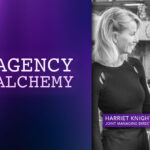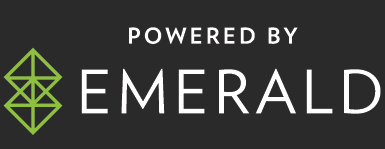By Kayleigh Jenkins, Group Business Director, krow Group
The recent uproar surrounding Jaguar’s brand refresh has been astonishing. What began as a teaser of a new brand identity quickly spiralled into a feeding frenzy of criticism.
The backlash reveals a troubling truth about our industry; despite claiming to champion progress and innovation, it’s clear there is still a tendency to tear down what doesn’t immediately resonate with us.
This made me wonder, are we, as creative professionals, our own worst enemy? How can we call ourselves forward-thinking if we resist change?
This is more than a question of professional courtesy, it’s a reflection of how our collective behaviour could stifle creativity, discourage new talent, and harm the industry we love.
Proclaiming progressiveness, but demonstrating backward thinking
The creative industry prides itself on innovation and diversity, celebrating campaigns pushing boundaries and challenging norms.
But the backlash against Jaguar’s rebrand, along with similar reactions to others like Pepsi, Airbnb and X (formerly Twitter), which faced severe online criticism for their logo redesigns, reveals a troubling contradiction.
Instead of thoughtful engagement with the brand’s bold strategy, reactions were dominated by knee-jerk public condemnation, lacking nuance, consideration of the brief, objectives, or the challenges faced. The criticism undermined not just the work but also the people behind it.
We claim to value diverse perspectives but fail to approach others’ work with empathy. We encourage change and risk-taking but resist when it challenges the status quo. What message does this send to the industry? Are we signalling that creativity is only welcome when it conforms to unspoken guidelines? Worse still, are we encouraging a culture where agencies and creatives second-guess every decision out of fear of public backlash?
If our industry truly wants to progress, we must hold ourselves accountable—not just for the work we produce, but for how we respond to others. Progress depends on respect and constructive dialogue, not hostility and quick judgement.
What does this mean for creativity and future talent?
The creative industry thrives on bold ideas. But when boldness is met with ridicule instead of curiosity, it sends a dangerous message: “Play it safe. Don’t take risks.”
In my experience, bold ideas often start with great promise but are inevitably watered down as they pass through layers of approval. While clients may initially embrace a daring concept, the introduction of new stakeholders can lead to compromises. Risks are toned down, and the final work is shaped to appease varying opinions rather than staying true to the original vision. This won’t be an unfamiliar story.
As much as agencies fight to protect the integrity of an idea, seeing it diluted in the name of consensus is disheartening. And when work that survives this process faces harsh public backlash, it only reinforces the fear that bold ideas aren’t worth the trouble.
The impact of this culture extends to emerging talent. Young creatives, who are often at their most experimental, could feel disheartened by the harshness they witness online. If they see professionals ripping apart others’ work, they may question whether this is an industry that nurtures creativity—or one that destroys it.
For diverse talent—those bringing fresh perspectives and ideas that challenge norms—the risks are even greater. If stepping outside the mainstream is met with hostility, they may feel pressured to conform, diluting their vision. This not only stifles innovation but undermines the diversity of thought the industry claims to value.
Holding ourselves to a higher standard
The creative industry is a paradox. We encourage clients to embrace change, yet when one of our own does, we’re often the first to criticise. This behaviour isn’t just unproductive—it’s self-sabotaging.
Platforms like LinkedIn amplify criticism, often turning what could have been constructive conversations into a public spectacle. Comments become performative, focusing on likes or validation rather than thoughtful dialogue. This fosters a culture of fear, where the question becomes: “How can we avoid being criticised?” instead of, “How can we innovate?”
Many critiques are rooted in nostalgia or resistance to the unfamiliar. In Jaguar’s case, much of the backlash seemed tied to a sense of loss over the brand’s heritage. But if we, as creatives, can’t embrace change—even when it challenges our personal preferences—how can we expect the public to do so?
By clinging to the familiar, we risk stagnation. The industry may shift toward safer, more predictable work, limiting creativity and reducing the value we bring to clients.
Reclaiming progress
The creative industry is at a crossroads; continue tearing each other down or foster a culture of collaboration and curiosity where all voices – even unconventional ones – are valued. To strengthen our creative community, we must actively embrace curiosity, collaboration, and constructive dialogue, starting with how we critique.
Instead of quick judgements, we should ask thoughtful questions to understand intent and strategy. Industry leaders must set the tone, creating safe spaces for discussion and celebrating ideas that challenge traditional norms. Mentoring young talent and encouraging creative risks without fear of ridicule is essential to nurturing the next generation.
By prioritising empathy and collaboration, we can build an environment where bold ideas flourish and true innovation is embraced. It’s time to hold ourselves accountable and approach the next bold idea with respect, curiosity and encouragement.




